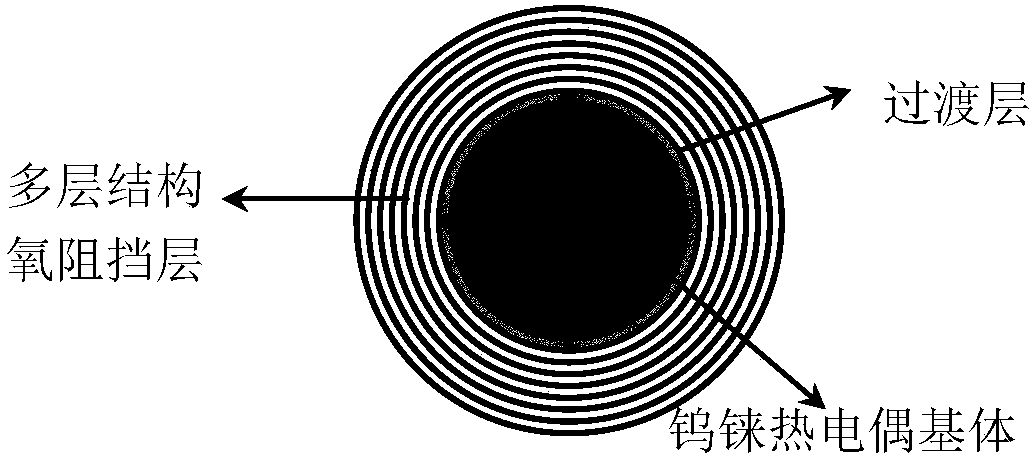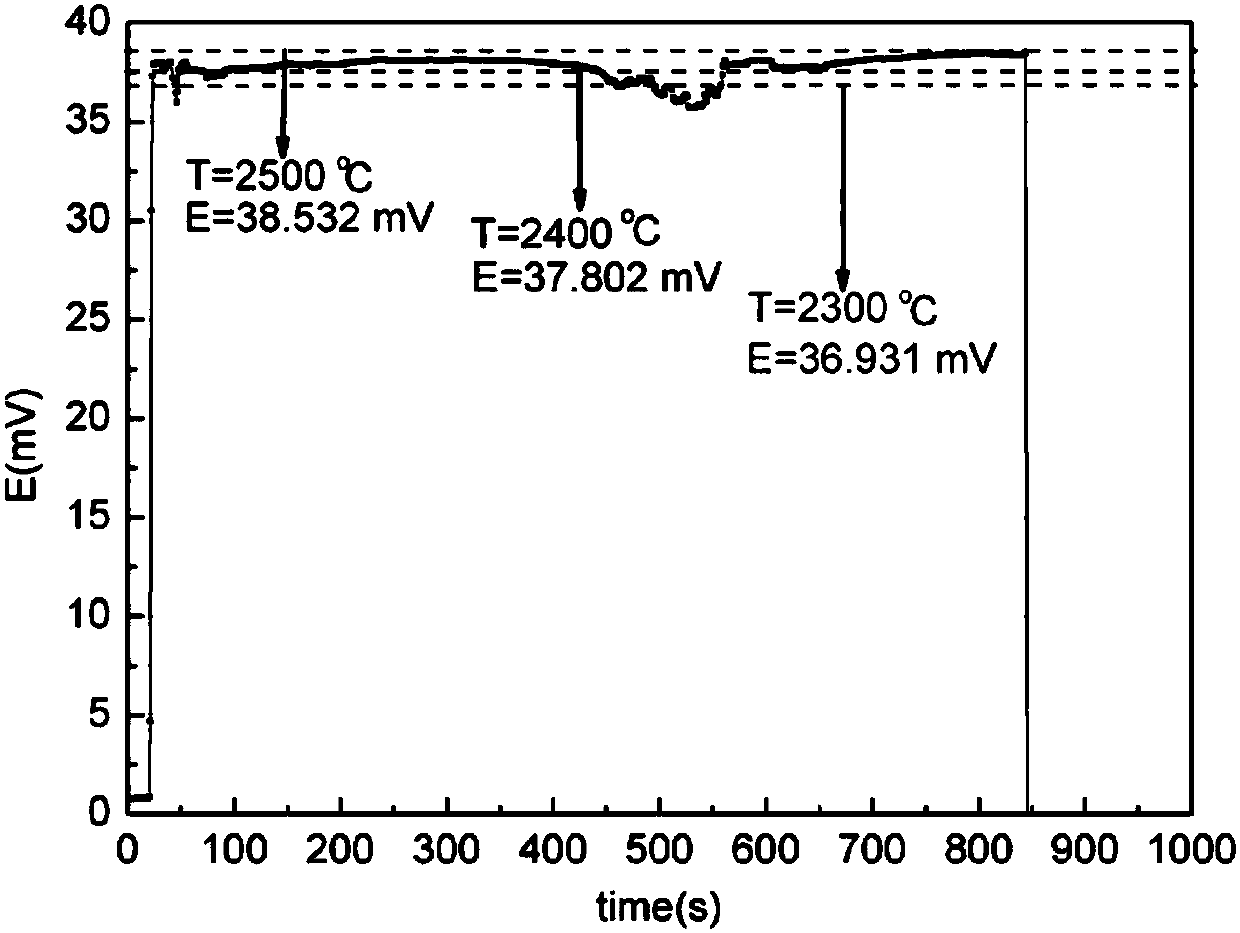Densification method for high-temperature antioxidant coating of tungsten-rhenium thermocouple
An anti-oxidation coating and thermocouple technology, which is applied in the direction of coating, superimposed layer plating, metal material coating process, etc., can solve the temperature resistance limit of thermocouple temperature protection tube, thermocouple armor volume and Increased weight, no persistent public reports, etc., to achieve obvious blocking effect, reduced thermal stress, and less micro-cracks
- Summary
- Abstract
- Description
- Claims
- Application Information
AI Technical Summary
Problems solved by technology
Method used
Image
Examples
Embodiment 1
[0069] A high-temperature oxidation-resistant coating structure for a tungsten-rhenium thermocouple, including a transition layer and an oxygen barrier layer. There is a TaC transition layer with a thickness of about 20 μm between the oxygen barrier material and the tungsten-rhenium thermocouple substrate, that is, the surface of the tungsten-rhenium thermocouple wire with a diameter of about 0.5 mm, such as figure 1 As shown, the oxygen barrier layer has seven layers in total, the first layer is HfC-10%ZrC material, the coefficient of thermal expansion is 6×10 -6 K -1 , the thickness is 20μm; the second layer is HfC-30%ZrC material, the thickness is 20μm; the third layer is HfC-50%ZrC, the thickness is 20μm; the fourth layer is ZrC, the thermal expansion coefficient is 7.3×10 -6 K -1 , the thickness is 20μm; the fifth layer is ZrC-10%ZrO2, the thickness is 20μm; the sixth layer is ZrC-30ZrO 2 , the thickness is 20μm; the seventh layer is ZrC-50ZrO 2 , with a thickness of ...
Embodiment 2
[0078] A high-temperature oxidation-resistant coating structure for a tungsten-rhenium thermocouple, including a transition layer and an oxygen barrier layer. There is a Ta transition layer with a thickness of about 15 μm between the oxygen barrier material and the tungsten-rhenium thermocouple substrate, that is, the surface of the tungsten-rhenium thermocouple wire with a diameter of about 0.5 mm. The oxygen barrier layer has six layers in total, the first layer is made of SiC material with a thermal expansion coefficient of 4.5×10 -6 K -1 , the thickness is 20μm; the second layer is SiC-20%HfC material, the thickness is 20μm; the third layer is SiC-40%HfC, the thickness is 20μm; the fourth layer is SiC-60%HfC, the thickness is 20μm; The layer is SiC-80%HfC with a thickness of 20μm; the sixth layer is HfC with a thermal expansion coefficient of 6.7×10 -6 K -1 , with a thickness of 20 μm. The total thickness of the oxygen barrier material of the multilayer structure is 12...
Embodiment 3
[0087] A high-temperature oxidation-resistant coating structure for a tungsten-rhenium thermocouple, including a transition layer and an oxygen barrier layer. There is a WSi2 transition layer with a thickness of about 20 μm between the oxygen barrier material and the tungsten-rhenium thermocouple substrate, that is, the surface of the tungsten-rhenium thermocouple wire with a diameter of about 0.5 mm. The oxygen barrier layer has eleven layers in total, the first layer is made of HfO2 material with a thermal expansion coefficient of 4.3×10 -6 K -1 , a thickness of 20 μm; the second layer is HfO2-10% YSZ (yttrium stabilized zirconia, molar ratio Y:Zr=6:100) material, a thickness of 20 μm; the third layer is HfO2-20% YSZ, a thickness of 20 μm; The fourth layer is HfO 2 -30% YSZ with a thickness of 20μm; the fifth layer is HfO 2 -40%YSZ, thickness 20μm; sixth layer is HfO2-50%YSZ, thickness 20μm; seventh layer is HfO 2 -60% YSZ with a thickness of 20μm; the eighth layer is Hf...
PUM
| Property | Measurement | Unit |
|---|---|---|
| thickness | aaaaa | aaaaa |
| thickness | aaaaa | aaaaa |
| thickness | aaaaa | aaaaa |
Abstract
Description
Claims
Application Information
 Login to View More
Login to View More - R&D
- Intellectual Property
- Life Sciences
- Materials
- Tech Scout
- Unparalleled Data Quality
- Higher Quality Content
- 60% Fewer Hallucinations
Browse by: Latest US Patents, China's latest patents, Technical Efficacy Thesaurus, Application Domain, Technology Topic, Popular Technical Reports.
© 2025 PatSnap. All rights reserved.Legal|Privacy policy|Modern Slavery Act Transparency Statement|Sitemap|About US| Contact US: help@patsnap.com



